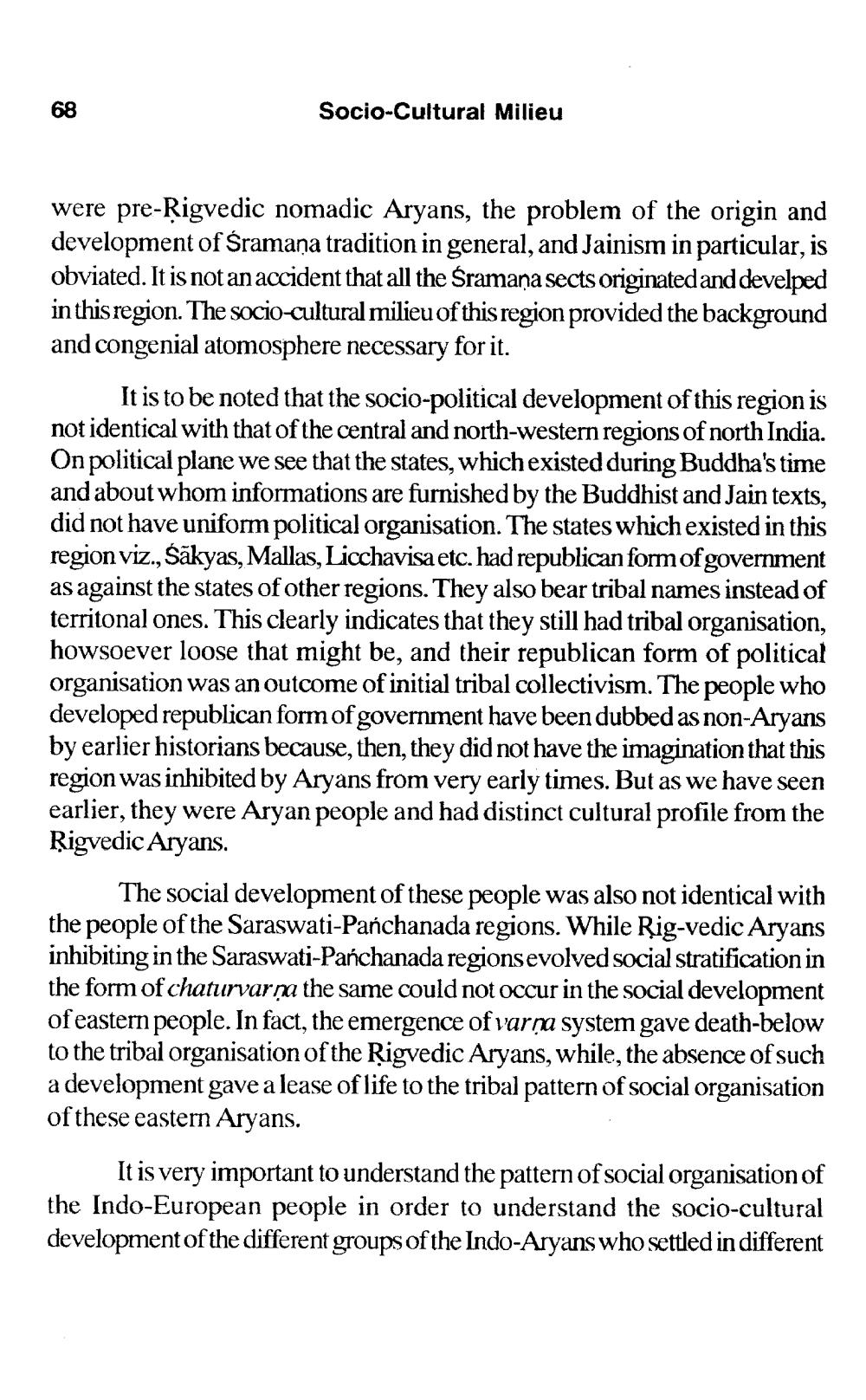________________
68
Socio-Cultural Milieu
were pre-Rigvedic nomadic Aryans, the problem of the origin and development of Śramaṇa tradition in general, and Jainism in particular, is obviated. It is not an accident that all the Śramana sects originated and develped in this region. The socio-cultural milieu of this region provided the background and congenial atomosphere necessary for it.
It is to be noted that the socio-political development of this region is not identical with that of the central and north-western regions of north India. On political plane we see that the states, which existed during Buddha's time and about whom informations are furnished by the Buddhist and Jain texts, did not have uniform political organisation. The states which existed in this region viz., Šakyas, Mallas, Licchavisa etc. had republican form of government as against the states of other regions. They also bear tribal names instead of territonal ones. This clearly indicates that they still had tribal organisation, howsoever loose that might be, and their republican form of political organisation was an outcome of initial tribal collectivism. The people who developed republican form of government have been dubbed as non-Aryans by earlier historians because, then, they did not have the imagination that this region was inhibited by Aryans from very early times. But as we have seen earlier, they were Aryan people and had distinct cultural profile from the Rigvedic Aryans.
The social development of these people was also not identical with the people of the Saraswati-Pańchanada regions. While Rig-vedic Aryans inhibiting in the Saraswati-Panchanada regions evolved social stratification in the form of chaturvarna the same could not occur in the social development of eastern people. In fact, the emergence of varna system gave death-below to the tribal organisation of the Rigvedic Aryans, while, the absence of such a development gave a lease of life to the tribal pattern of social organisation of these eastern Aryans.
It is very important to understand the pattern of social organisation of the Indo-European people in order to understand the socio-cultural development of the different groups of the Indo-Aryans who settled in different




